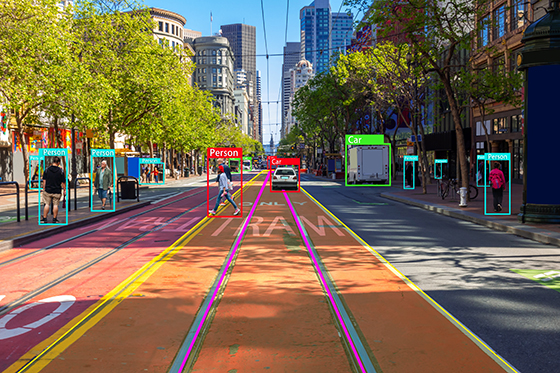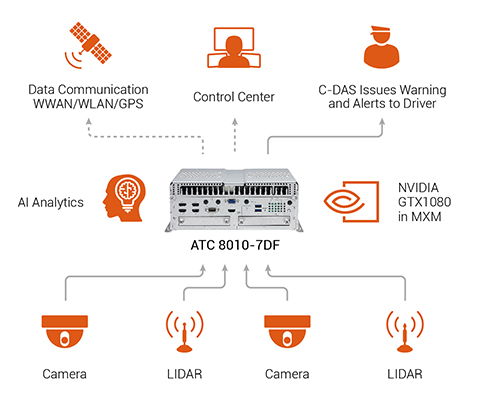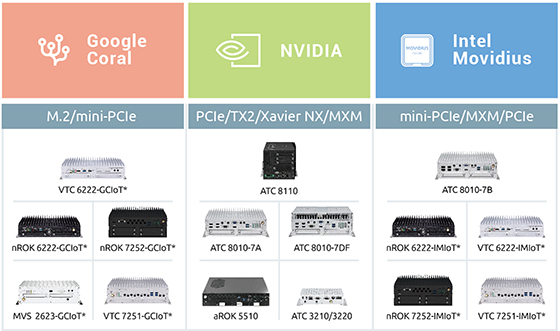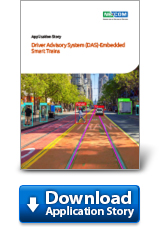Driver Advisory System (DAS)-Embedded Smart Trains
Background: Countries are rapidly establishing more advanced and environmentally-friendly rail transportation infrastructure
Across the globe, the marriage of technology and construction, combined with sustained urbanization and industrialization, has arguably led to various countries building efficient and effective modes of public transportation. In particular, light rail systems have received substantial investments from both public and private sectors, especially in second-tier and satellite cities, as they often require fewer costs and less time to launch services.
In designing and planning an at-grade light rail system infrastructure, transportation agencies need to contend with both natural and manmade obstacles, which are usually not major issues with underground systems. In particular, light rail vehicles often share surface streets with and must maintain safe distances from other forms of ground transportation and pedestrians. Agencies must also cope with existing crossroads as well as construct overpasses and underpasses. A quality transportation management system should additionally be comprehensive enough that it can be incorporated in other rail infrastructures and environments, so as to minimize each subsequent railway line’s startup and implementation costs. Furthermore, the system needs to be able to intelligently manage functions such as power monitoring and maintenance needs, thus saving money and downtime.

Though technology has progressed adequately to support completely automated metro system infrastructure, at-grade light rail is not ready just yet. Burkhard Stadlman, Austrian professor and researcher on automated trains, points out:
…On regular train lines, where, for example, you have road crossings and no fences along the track, we’re nowhere near operating driverless trains…They need very good obstacle detection and safety systems need to be top-notch because they ride around in all kinds of weather conditions [1].
Therefore, safety dictates that a train should have a conductor onboard to operate the train and monitor conditions until automation is proven to be completely risk-free for passengers and the external environment. In 2020, NEXCOM’s Mobile Computing Solutions group will contribute such technology to several railway projects in Australia and China by incorporating AI capabilities into their transportation systems, all in the hopes of enhancing public safety and autonomous technology.
System requirements: what does a comprehensive transportation management system need?
The conductor needs to have a safe, effective, and up-to-date transportation management system in order to move passengers safely between destinations. This system should ideally consist of four crucial components: an AI-enabled computing platform, communication network, first-rate video capture equipment, and connected driver advisory system (C-DAS). Using an analogy of the human body system, think of the computing platform as the body itself, the communication network as the mouth, the video capture equipment as the eyes, and C-DAS as the “soul” of the body.
The computing platform is the most integral piece of the transportation management system puzzle, serving as the core to all of the other moving pieces and performing complex analysis. Video capture and LIDAR work in tandem with the platform’s computer vision and AI capabilities to distinguish between various foreign objects, such as vehicles, pedestrians, and traffic signals. More specifically, 4k cameras capture high-quality video, while LIDAR sensors measure distances by using light in pulsed laser form. Furthermore, a reliable and lightning-speed communication network transmits data to and from the control center and rail driver, as well as uploads to the cloud for documentation and deep analysis purposes.
Finally, housed on the computing platform and using information provided by the communication network and video/LIDAR components, C-DAS observes roadway situations, identifies risks, and avoids accidents by instantly issuing warnings and alerts to the conductor/driver and centralized control center. Being “connected” with the entire light rail network, C-DAS operates in conjunction with the rail network’s traffic management system (TMS), which controls routing, timing, and movement of vehicles across the network, to guide each driver in operating not only safely but efficiently, avoiding unnecessary stops, conserving energy, reducing wear-and-tear, and avoiding accidents and operational incidents [2].

Light Rail Connected Driver Advisory System (C-DAS)
The answer is here: the light rail C-DAS, based on NEXCOM’s ATC 8010-7DF
In light of all of the aforementioned concerns, NEXCOM has introduced the ATC 8010-7DF, a top-of-the-line, AI-enhanced computing platform, to system integrators in some of the world’s most populous cities. The platform effortlessly combines with third-party hardware and software, as well as C-DAS, to update inadequate light rail systems with ones that are reliable and safe, technologically advanced, and fully integrated. Highlighted by its advanced AI analytics potential, the ATC 8010-7DF guarantees unsurpassed graphic performance with the onboard NVIDIA GTX 1080 MXM GPU, which easily handles real-time AI vision. The platform’s compact size means that it’s a perfect fit for smaller spaces and easily upgradeable. Amidst the light rail network’s complex traffic needs, it’s also able to clearly distinguish among various vehicles and foreign objects, as well as judge their distances relative to the train itself.
Not only is the ATC 8010-7DF tested against vibration and shock to MIL-STD-810G standards, it also operates at extended temperatures of -30° to 60°C, making it suitable for harsh environments. We additionally provide eight PoE 802.3 af/at ports with optional M12 connections to preempt the inevitable vibration issues on railways. The PoE ports supply power and connectivity for 4k PoE cameras, to record and immediately relay high-resolution video, and LIDAR, to monitor distances between the light rail vehicle and other objects. These devices all support the C-DAS, which combines this data with AI image analysis and recognition technology, to identify and warn about risks within 300 meters of the railway, including persons, vehicles, and objects. The conductor is then able to control vehicular speeds and maintain safety.
The advanced telematics computer, based on Intel’s 9th Generation Core CPUs, ensures expedient data processing. With two external SSDs that are configured for RAID 0, 1, 5, and 10, plus two mSATA drives, NEXCOM guarantees that essential data is protected and storage is ample. In today’s world, as legacy equipment becomes outdated and needs immediate replacement, on top of rapidly increasing data transmission speeds, users have peace of mind in knowing that our onboard WWAN modules arrive 5G-ready and GPS-enabled to swiftly upload to railway systems’ intelligent control centers for analysis and assistance with road condition monitoring. The control center is then able to effortlessly control traffic at intersections, mainline turnouts, and depots.
Conclusion: the successes of light rail means that it’s here to stay
Light rail infrastructure has become a popular, environmentally-friendly remedy for urban transportation issues. Introducing the state-of the-art AI and object recognition capabilities of NEXCOM’s ATC 8010-7DF into such infrastructure has been proven to improve overall safety and accuracy. The 5G-enabled WWAN modules, combined with third-party high-resolution PoE cameras and LIDAR, easily connect with the ATC 8010-7DF to provide a fully integrated, intelligent C-DAS. This system, when added to light rail infrastructure, allows governments to quickly build low-cost railways in emerging cities, striking a proper balance between speed and safety. Light rail systems also boost overall transportation capacity and utilize exclusive right-of-ways to increase passenger numbers, without the adverse consequence of compounding vehicular traffic.
NEXCOM is dedicated to revolutionizing the smart transportation industry with solutions that are cutting-edge, yet safe and secure. In meeting customer needs across the transportation industry, NEXCOM provides a wide range of AI-enabled transportation management solutions. For more information, please contact the Mobile Computing Solutions group.

NEXCOM’s Industrial AI Edge Computer Solutions
References
[1] T. Cassauwers. “Driverless trains are coming, but what about the workers?” Equal Times. https://www.equaltimes.org/driverless-trains-are-coming-but#.Xs3hAUBuLIW (accessed May 27, 2020).
[2] K. Barrow. “C-DAS: taking driver advisory systems to the next level.” International Railway Journal. https://www.railjournal.com/in_depth/c-das-taking-driver-advisory-systems-to-the-next-level (accessed June 9, 2020).

- Related Links:
- ATC 3563: Elevating Edge AI Performance for Smarter, Safer Construction Vehicles
- ATC 3562: Reinforcing Edge AI Intelligence in Harsh Environments
- Browse Other News:
- Urban PET Recycling Reinvented Sustainable Solutions Powered by NDiS B561
- AIEdge-X®80 Leaps Ahead: Power Up TOPS Performance with NVIDIA® Jetson™ Super Mode
- All Case Study News

